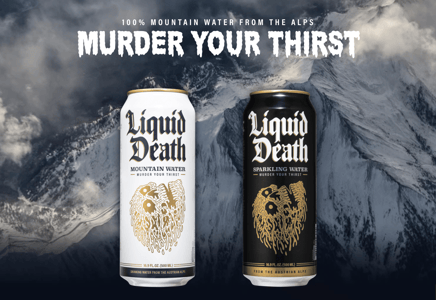
A Brand Walks Into a Bar - The Use of Humor in Branding
Written by Brett Rakestraw
The Funny Thing About Funny Things
Humor is one of our most fundamental forms of communication. Within weeks of birth, a baby learns to smile and laugh as its second communication tool...after crying for survival, of course. As we grow up, we learn to use humor to create bonds, defuse tensions, or to just get a quick dopamine hit.
Some psychologists in the past considered humor to be a negative trait; a tool to hide behind or to belittle others. But, more recent psychology has viewed humor as a positive character strength that connects people and makes others feel good.
It’s natural that we tend to be drawn to those who we think have a great sense of humor, who can make us laugh, whether it be something silly or something that gives us a deeper understanding of the human condition in a more palatable way.
What we find funny varies from person to person, but it’s safe to say that we can all use a good laugh from time to time, and some of our closest relationships are formed with those who make us smile the most.

The Funny Things About Brands
Brand building is about relationship building, and at their best, brands feel like humans. So, it is not at all odd to consider using humor with a brand. If a brand brings a smile to our face, or better yet, makes us laugh out loud, we are more likely to think positively about that brand and to feel a kinship with it.
When we take a look at common brand archetypes, the Jester is an obvious archetype for a humorous brand. Brands in this archetype don’t take themselves too seriously. They aim to lighten the moods of their audience and elicit joy. They usually aren’t trying to sell serious products, although it could be argued that Geico is a jester brand, and insurance is definitely a serious product.
Let’s take a look at a few classic examples of jester brands that use humor throughout their brand and marketing efforts.
In On The Joke
Doritos is a great example of a brand utilizing aspects of the jester archetype, particularly in brand marketing efforts. In the crowded snack chip market, Doritos needs something other than a new wacky flavor combination to turn heads and draw in raving fans. They recognized that there was an opportunity to use humor as a brand building mechanism and that they could really make the most of the audience connection by letting their fans submit funny ad ideas.
Doritos launched their first customer-sourced, humor driven Super Bowl ad in 2007 to rave reviews. They’ve gained a reputation for having some of the funniest Super Bowl ads every year since.
Not only did Doritos recognize the power of making their audience laugh, they recognized the exponential power of laughing with their customers. And, they gained massive insights into what their customers find funny by crowdsourcing ideas from them.
Die Laughing
While brands like Doritos have used humor effectively in brand marketing, some brands take the jester archetype to new levels, infusing humor into everything from naming and messaging to packaging and web design.
Take the example of Liquid Death. Launching into the hugely saturated market of prepackaged water, Liquid Death needed to rethink the whole idea of branding in their space. Most water brands focus on healthy lifestyles, no calorie refreshment, and general good feelings. But, not Liquid Death.
In fact, Liquid Death goes so far as to say on their own web site, “We started Liquid Death with the totally evil plan to make people laugh and get more of them to drink more water more often.” They make it clear that they are trying to connect with customers and build fans on humor as their key differentiator.
And, it’s working. Can you name another water brand that has over 3 million followers on TikTok? Here’s a hint, Smartwater has about 400. Liquid Death has brand differentiators like aluminum can packaging instead of plastic bottles, but it’s the total commitment to using humor and a mischievous attitude that has given them the brand credibility that they enjoy today.

To Laugh Or Not To Laugh
The key to great comedy really is timing. There are times to laugh and times to be serious, and understanding the difference is essential when using humor with your brand. Being inappropriately funny can be detrimental to a brand’s credibility. Just ask a number of brands who made one too many “contagious” jokes during the COVID-19 outbreak.
A brand like Liquid Death that is built on a foundation of humor can be expected to be funny just about all the time. But, a brand like Doritos balances humor with the ability to pull back at times in order to draw attention to serious topics, like they recently did with their #AMPLIFYBLACKVOICES campaign. It’s okay to incorporate brand humor without having to be funny all the time.
The most important thing to consider when deciding on involving humor with your brand building is, surprise….your audience. A brand is a personality and should be a reflection of its audience. Know your audience first. Learn what makes them laugh and why. Figure out if they want to be entertained or not, and then build your brand around what your audience wants, funny or not.
Most brands can benefit from using humor in the right places within their branding and marketing efforts. But, how far to go really depends on the audience, the market, and the competition. And, if you aren’t thoughtful about it, the joke might be on you.
Topics: rebrand/refresh development
